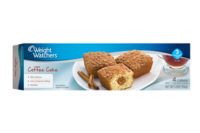State of the Industry 2019: Sweet goods benefit from trend-based improvements
Sweet goods add healthy ingredients, as well as new high-sensory ingredients, to build diversity and interest














People have always had a love affair with sweet baked goods like pastries, doughnuts and muffins. Today, however, we want sweet treats that are delicious and sometimes even a bit more nutritious—but only slightly less indulgent. One reason is the rising awareness of dietary concerns related to carbohydrates, sugar and trans fats.
As a result, many bakeries are answering the call by adding healthy ingredients to sweet goods as well as exotic flavors and unique toppings to build renewed interest. To truly succeed, though, sweet goods always must deliver a highly sensory experience.
Overview | Bread | Tortillas | Sweet Goods | Snack Cakes | Pizza | Desserts | Cookies | Buns & Rolls | Bars | Breakfast Products
Market data
Looking at data from IRI, Chicago for the past 52 weeks ending March 24, 2019, the overall pastry/doughnuts category saw a slight bit of growth, up 0.7 percent to $5.1 billion. Private label leads every segment of sweet goods, which encompasses pastry/Danish/coffee cakes, doughnuts and muffins—although branded products remain highly competitive, often just barely trailing private label in overall sales and market share.
The pastry/Danish/coffee cakes grew by 0.5 percent to $2.0 billion for the year. Private label leads with $453.4 million, up 2.2 percent per IRI, with McKee Foods trailing at $307.5 million in sales, up 1.8 percent for the reporting period. Bon Appetit Danish jumped 12.2 percent to $241.2 million. German conglomerate JAB Holding Co.—owners of the Krispy Kreme brand—jumped into the top 10 for 2019 with sales of $36.2 million, up 76.3 percent.
Doughnuts had a slightly off year, down 3.3 percent to $2.0 billion. Segment leader private label dropped 3.1 percent to $462.7 million, while Hostess Brands grew 5.4 percent to $388.7 million.
The muffins segment saw another strong year of growth, up 8.8 percent to $1.2 billion, per IRI. Here, private label is experiencing its tightest competition. Private label was up 13.1 percent to $408.4 million, while Grupo Bimbo grew its muffin business by 16.7 percent to $404.2 million. Other companies in this lively category that experienced strong growth include McKee Foods, up 20.3 percent to $51.7 million, and Café Valley Bakery, up 11.4 percent to $33.9 million in sales.
Looking back
During the past year, there has been a trend toward offering miniature baked goods, items that showcase natural or unique ingredients, and items featuring interesting flavor hybrids or mash-ups. Yet, sweet goods purchases continue to be driven by perceived indulgence and whether the sensory experience delivers on that perception.
“When people purchase sweet goods—be it doughnuts, croissants or cinnamon rolls—they expect a pleasing experience. This has contributed to the rise of artisan-inspired applications, with packaged goods brands seeking to extend and elevate sweet goods to reflect the sensory experience one might get from a corner bakery,” says Matt Patrick, director of technology, applications research and technical service, Delavau Bakery Partners by SafPro, Piscataway, NJ.
“Enlightened eating” is one trend that has impacted the sweet goods market during the past year, as consumers seek inherent benefits from food to help fuel their bodies, according to Jennifer LaPaugh, senior director, global market research and insights, Dawn Foods, Jackson, MI. “While we see growth in traditional flavors such as blueberry, chocolate chip and banana, we also see exploration into adding nutritional benefits—incorporating everything from vegetables, such as pumpkin, zucchini and carrot, as well as seeds and nuts, such as pistachio, poppy seed and morning glory, to other healthy ingredients, such as raisins and ancient grains.”
Emily Diersing, process engineer, Food Plant Engineering, Cincinnati, OH, has noticed an emerging trend toward healthy sweet goods that are high in protein content. She also sees a focus on grab-and-go items, such as doughnut holes in cups, as well as specialized items that align with Paleo, vegan and gluten-free diets. Sweet goods with plant-based ingredients are also factoring into the mix.
More consumers are looking for short, pure ingredient lists that don’t sound artificial as well as intense and varied sensory experiences. “Our company has created a range of clean label shortenings and margarines to meet this need—removing and/or replacing artificial flavors, colors and preservatives with cleaner label alternatives,” says Mark Stavro, senior director of marketing, Bunge North America, Chesterfield, MO.
During the last year, bakeries have been reimagining product innovations that pair indulgence with natural ingredients. Fruit ingredients, such as Montmorency tart cherries, add a sweet-tart flavor and nutrition value to bakery items, allowing health and indulgence to co-exist, according to Mollie Woods, executive director, Cherry Industry Administrative Board, Dewitt, MI. “Paleo, vegan and gluten-free ‘food tribes’ also are driving recipe creators to reformulate products across categories—sweet and dessert products included—to reach key niche targets.”
Doughnuts have been in high demand, according to Jamie Mavec, marketing manager, Cargill, Minneapolis. That’s because doughnuts fit well with consumers’ on-the-go lifestyles. Bakeries also have done their part to drive sales, with creative offerings that capture attention. “While the traditional yeast-raised or cake doughnut is still a crowd pleaser, innovations with exotic flavors, unique toppings and daring mash-ups have transformed doughnuts into more than a breakfast treat.”
In the doughnut market, the trend is toward high volume and flexibility, according to David Moline, vice president, sales and marketing, Moline Machinery LLC, Duluth, MN. For both cake and yeast doughnuts, bakeries need to maximize production and change sizes quickly—for example, from a standard-size to a mini-size product. “Mini products continue to grow in market share,” he reports. “Mini ring doughnuts and mini cinnamon rolls, in particular, are commonly produced on high-capacity systems. Moline’s sheeting method for yeast-raised doughnuts provides flexibility and high quality for 24/7 bakeries.”
Looking forward
Artisan-inspired sweet goods, along with seasonal and on-trend LTOs, will continue to shape this segment in the coming year, says Patrick, noting that indulgence—a hallmark of artisanal baked goods—inspires repeat purchases and brand loyalty. “One way that we work with sweet goods brands to deliver a more-indulgent sensory experience is through our Encore Soft textural shelf-life extension technology. It extends the textural shelf life of a yeast-raised doughnut from 18 to 36 hours and the textural shelf life of a shelf-stable snack cake from 30 to 45 days.”
During the next year, the market will likely see continued growth of baked goods that are considered staples, including cinnamon rolls, cream cheese Danishes and apple turnovers, according to LaPaugh. At the same time, categories that are gaining momentum, such as churros and scones, will continue to experience strong growth.
“It’s important for bakeries to understand that certain sweet goods appeal to different audiences. For example, churros appeal to millennials, while boomers are more attracted to traditional bakery items. Bakeries looking to expand and diversify their customer base should tailor their menus to draw in new customers,” LaPaugh says.
To accommodate trendy dietary lifestyles like Paleo and keto—as well as gluten-free, which extends well beyond those who actually need it—some traditional bakery ingredients will be replaced by plant-based ingredients, such as coconut oil/flour and almond milk/flour instead of enriched wheat flour and milk, and honey or maple syrup instead of refined sugars, predicts Diersing.
Choosing the right ingredients is an increasingly complex decision, especially in today’s clean-label environment, according to Pam Stauffer, global marketing programs manager, Cargill, Minneapolis. “Even in indulgent categories like sweet baked treats, consumers are looking for shorter ingredient statements, with names that they recognize. We’re also seeing more bakeries requesting organic, non-GMO and allergen-free ingredient options.”
Adding protein is one approach to creating the “permissible indulgences” that consumers desire. Muffins, in particular, lend themselves to protein fortification. “Cargill has created tasty muffins packed with 6 grams of PURIS pea protein. PURIS has a mild flavor profile, a major benefit when used in sweet goods where taste is paramount,” Stauffer says.
More consumers are trying to limit their sugar intake. As a result, new sweet goods with reduced sugar are on a growth trajectory, according to Jeff Smith, director of marketing, Blue Diamond Almonds Global Ingredients Division, Sacramento, CA. “We see an opportunity for formulators and bakeries to reimagine their sweet goods with healthy, natural ingredients such as almonds, which offer great flavor without the high-sugar, high-fat content that consumers are trying to eliminate from their diets.”
Protein definitely is on trend in the bakery category, adds Smith, noting that Blue Diamond’s almond protein powder is aligned with the trend toward functional and enhanced sweet goods. He notes that the nutrient-dense ingredient blends well with other protein powders, and it has a mild flavor and extra-fine texture, recommending it for fortified versions of traditional sweet goods, like muffins.
As our love of sweet goods continues, the biggest growth opportunity for bakeries is in the ability to offer familiar, fresh-baked favorites, as well as new and unique items to surprise and delight customers without sacrificing quality or taste. The biggest challenge in foodservice is often related to finding qualified labor to meet demand, which may force operators to search out simpler formats and alternatives, such as pre-made, partially made or freezer-to-oven options, according to Jordan Beazley, global consumer insights associate, General Mills Convenience & Foodservice, Minneapolis. “For example, General Mills offers Pillsbury Fresh Baked Goods—frozen baked goods such as cinnamon rolls and scones, croissants, biscuits and muffins—all of which can be baked fresh onsite.”
Overview | Bread | Tortillas | Sweet Goods | Snack Cakes | Pizza | Desserts | Cookies | Buns & Rolls | Bars | Breakfast Products
Looking for a reprint of this article?
From high-res PDFs to custom plaques, order your copy today!













